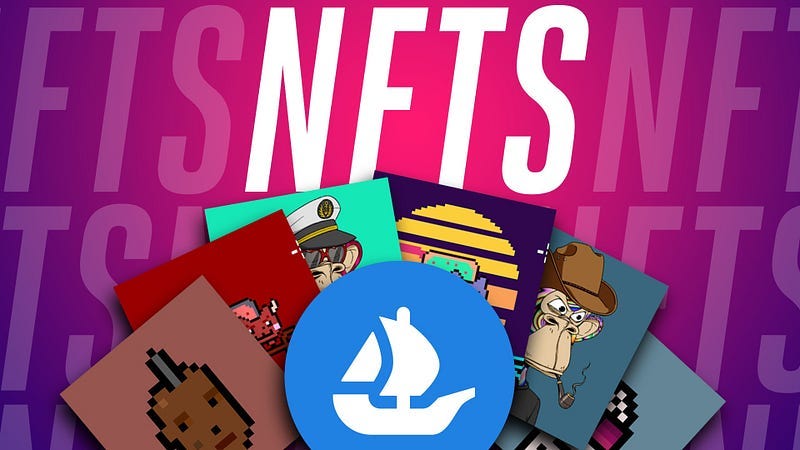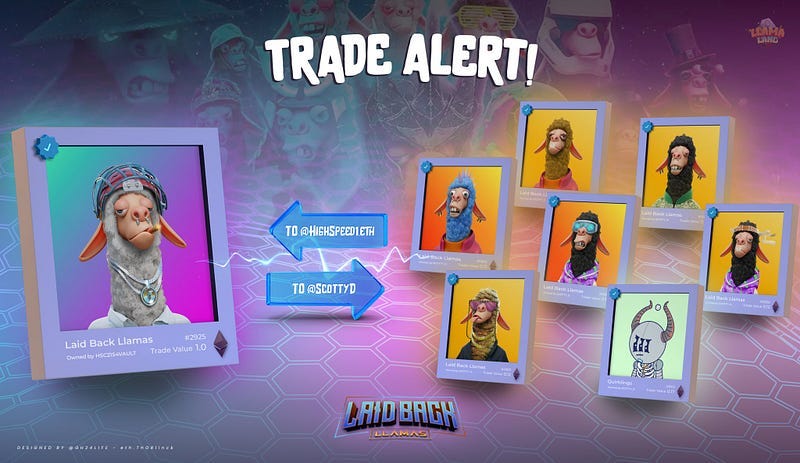The truth hurts, but it’ll eventually be out.
It is no news that the most popular Ponzi scheme in Web2 is networking and affiliate marketing. If you disagree, feel free to enlighten us in the comment section.
Now, Web3 is a very interesting field that seems to be the new wealth creation hub with crypto and NFTs at the frontlines. Many people do not understand the idea behind NFTs and some have tested the waters and cried hot tears, while others have become millionaires.
The NFT space is fairly young and there is so much more to be done, but first, is this thing about NFTs being a Ponzi scheme true? That is why we are here.
Let’s break it down.

NFTs in a nutshell
For those who don’t know, NFTs are not just JPEGs. Asides from being digital art pieces, they’re also tradeable collectibles that exist on the blockchain rather than in a physical store or gallery. They can be 2D and 3D printed and displayed in your home, office, or the metaverse.
NFTs (Non-fungible tokens) are digital assets that exist within smart contracts which enable us to assign tokens to different owners. These tokens(ERC-20, ERC-721, & ERC-115) are different, yet similar on a fundamental level.
NFTs mostly function on the standard ERC-721 token which comes with a unique identifier that enables you to distinguish one unit from the other. That is why most NFTs have the same functionality such as the ability to transfer tokens or attach an asset (images).

The blockchain where the NFT exists serves as an official ledger to document the creation and transfer of NFTs from one person to another.
Regarding how anyone can right-click and save and claim ownership, I think the easiest way to describe them is like identity cards. Hear me out.
You see how anyone can use a celebrities picture as their wallpaper or pfp, or album art but get sued for copyright infringement, the tokenization of these artworks is what makes them NFTs. In every aspect of art or business, there is, and will always be duplicity and people who try to resell an item that isn’t theirs. It doesn’t change the fact that there is an original and a replica.
That’s where the ‘Non-fungible token’ comes in. This means that each token contains a unique property. Every token is distinguishable from one another. That main property is the “token ID”.
You own the token ID, NOT necessarily the JPEG. The image you associate your NFT with is just extra data assigned to your specific token ID. We call this “metadata”, and it often contains a link to the image. Functions to change this metadata usually exist and can be implemented at any time.
In essence, what you own is a string of numbers in a piece of blockchain code, that has a digital asset (JPEG) attached to it.
How do NFTs create wealth?
Just like physical art, NFTs can be sold for any amount depending on the estimated value to the buyer and seller. NFTs can be created by an individual as single artwork or a collection and sold, or by a team and released to the public as a collection with different traits and rarities.
NFTs have as much value as physical art pieces and have generated billions of dollars for individuals and art agencies alike.
NFT’s sales were estimated at $ 10.7 billion for the third quarter of 2021 (Source: DappRadar).
Art appeals to people differently and some will pay any amount to own the only version of art, a picture, or an item.
For example, Former Twitter CEO Jack Dorsey’s first tweet was submitted as an NFT, auctioned, and ultimately purchased for $2.9 million.
Unlike physical art, every NFT generates a percentage of revenue for the artist from every secondary sale. That means every time the current owner sells that piece of art to a new owner, the artist or creator gets a set percentage of the earnings. The revenue can also be used for other causes and extended utility to the holders of the NFTs.
This NFT above titled ‘Stay Free’ is a textual portrayal of its own artist Edward Snowden in connection with the US Court of Appeals ruling on the NSA phone call tapes case.
This very symbolic and representative artwork defending the freedom of speech in the United States was auctioned off by the artist Edward Snowden himself and was purchased for the price of $5.27 million. Benefits from this auction went to the Freedom of the Press Foundation, a non-profit organization that fights for freedom of speech.
Unfortunately, as much as it sounds great to create a chain of earnings for everyone who interacts with a particular NFT, people exploit the NFT space to use others as exit liquidity. They do influencer marketing to drive FOMO (fear of missing out) and because they have no plan to create value down the line, they get their initial profit and leave to create the next collection, sell to new buyers, earn some profit, and the cycle continues.
For a large community, as the hype and utility of these NFTs are delivered, people see the value and attempt to purchase from the existing collection available on the specified marketplace such as Opensea, Magic Eden, Looksrare, and others.
Yesterday’s price is not today’s price.
As the value of these NFTs increases, holders list their NFTs accordingly, and an NFT that was originally purchased for $200, can be sold for $2000 or $20,000 depending on the value or how desperate the new buyer is to own it.
Why you aren’t making money from NFTs
There are several reasons why most people aren’t making money from NFTs. These reasons include lack of research, FOMO, poor decision-making, getting rugged, buying the top, and selling the bottom.
The NFT space is mostly a gamble. That’s the truth.
One of the most important terms in Web3 is DYOR (Do your own research). Don’t buy any NFT or tokens because someone said so. DYOR! You need to do proper research to identify the following; What NFT to buy, When to sell, How long to hold, and When to quit.
If you always go by the WAGMI (We all gonna make it) public opinion, you’ll mostly lose. The sad reality is we all won’t make it. The earlier you realize this, the smarter NFT plays you make.
My first two NFT mints were rugs. Laugh at me because I laugh at myself sometimes. If I knew better, I wouldn’t have invested my first $1000 in NFTs to influencer-pumped projects and WAGMI. Don’t get it twisted, we all still hold a couple of rugs in some wallets, but practice makes perfect, and you learn from your mistakes, or you don’t.
As much as Art is beautiful and NFTs have made the collection of Art and earning system much easier, for most people, it is a get-rich-quick system propelled mostly by hype. At the end of the day, it is a business for some and an investment for others.
In all, as you explore the world of NFTs and Web3, stay safe, and don’t invest more than you can afford to lose. You won’t always win.
From my experience, I don’t think NFT is a Ponzi scheme but more of a gamble. You need to play smart (buy low, sell high), and stay clear of greed. What are your thoughts?
If you have any thoughts or questions, drop them in the comment section, and feel free to join us on Episode 3 of #RealTalk on Twitter, where we discuss more on the topic.








